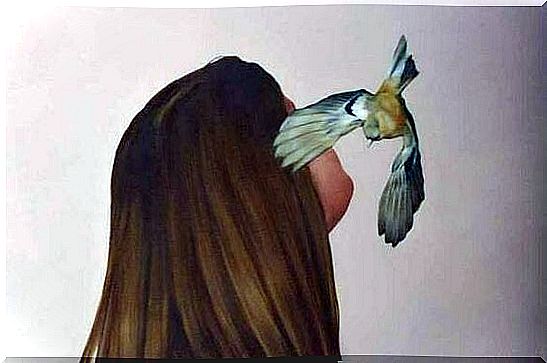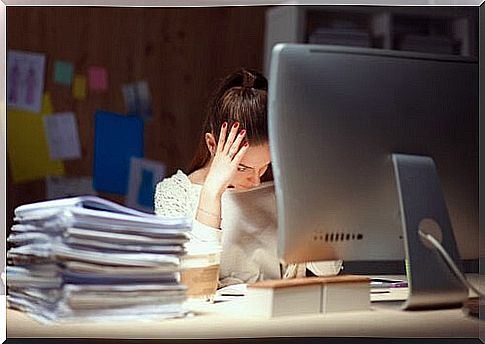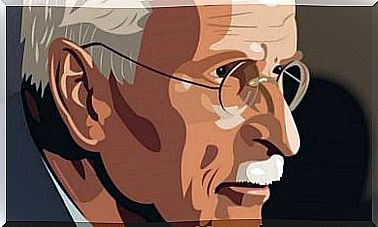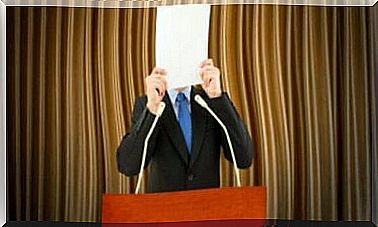Three Things I No Longer Do When I Get Anxiety

When I get anxious, people love to say, “Calm down, relax, it will make you feel better, you will see.” In a few minutes I will make it, but not long after, the scary enemy will return to steal the air from my lungs.
This is because anxiety is not a disease, it is a symptom. It is an echo of a vague, deep and formless problem that must be cleaned up and treated.
We all know the feeling. It usually begins with a pressure in the chest, as if the demon from the famous Heinrich Füssli painting, “The Nightmare”, sat on top of us and stole our energy. Then comes muscle aches, headaches, digestive problems and insomnia.
Nor can we forget that the physical symptoms get worse every day. This is due to the deadly combination of distorted thoughts, mostly negative, and a constant sense of threat.
It does not matter what we specifically do – we can even be on vacation. If our thoughts are trapped in the dark, dreaded tunnel full of catastrophic thoughts, “relaxing” will not help us.
In these states where I am not able to rationalize, there are many things I no longer do when I get anxious.
We can do yoga, paint a mandala, listen to music, or go for a walk. All these activities are positive, relaxing and have natural benefits. There is no doubt about it, but they are temporary benefits that do not really address the root of the problem.
In reality, success in treating anxiety processes lies in an interdisciplinary approach. Relaxation is very therapeutic, in addition to the support of our loved ones, exercise and a balanced diet.
But we also need a cognitive behavioral strategy that will help us re-place certain things and make changes.
Below we look at how to meet this reality in the best possible way. We’re talking about things I no longer do when I get anxious. Let’s treat our anxiety and send it away for good.

1. When something worries me, I have learned not to run away
Ana works in the advertising industry for an important company. She is at work every day until 8 o’clock. But a few weeks ago she started arriving late. The strange thing is that she leaves her house on time.
But just when she is going out on the highway to drive to work, she turns and drives to a cafe. There she drinks an herbal tea and tells herself that she does not want to think about anything for a whole hour. She just wants to relax.
As we can see from this little example, Ana flees from the root to the problem. She does not feel able to go to work.
So now she goes to work late, but later she may end up taking sick days. Because the pressure, the fear and the anxiety will make her believe that she is not able to fulfill her responsibilities.
What is the right thing to do in these situations, then?
Reactions like this are completely normal. Why?
When our brain feels a threat, it begins to release a lot of cortisol, so our body will be prepared to fight or flee.
- The problem with avoidance is that it makes the anxiety worse in the long run. It intensifies it.
- Moreover, the more we repeat this behavior by running away, the more we see ourselves as people who are unable to face the situation. So the fear gets worse.
- In these scenarios, a useful strategy is to use, instead of fleeing, avoiding or distracting ourselves, to think about the situation through questions that can start with “what would happen if…?”
- What would happen if I told my boss about what was not working right for me?
- … If my boss told me I was right and my working life got better?
- … If I lost my job?
- What would happen if I put all my energy into looking for a job with potential?

2. One thing I no longer do when I get anxiety: overthinking and lingering
Constant, obsessive-compulsive disorder is the cognitive component of anxiety. Therefore, one of the worst side effects is that we lose our ability to reflect. To be able to analyze things calmly, from more logical and useful perspectives. Therefore, we must keep these aspects at the forefront of our minds.
- When something worries me, scares me, or irritates me, my head will naturally tend to focus on the negative. Not long after, the feeling of worry and danger will worsen.
- One way to stop this vicious cycle is to become aware of it.
- In these situations , it really helps to do progressive relaxation exercises. An example of this could be breathing with a diaphragm. Such exercises are useful for soothing symptoms such as muscle tension and internal agitation.
- Only when we notice that our body feels more relaxed and our head is clearer can we begin to break the cycle of negative thinking. Then we bring in new alternatives. We want to focus on the present instead of predicting things to come.
To overcome the demon of anxiety in our daily lives, we give ourselves achievable, simple, logical and positive short-term goals. And we use an inner dialogue that works more like a friend than an enemy.
Dwelling is one thing I no longer do when I get anxiety.

3. When I get anxiety, I no longer deny it
One thing we should be very clear about is that it certainly does not make sense to want to erase the anxiety from our lives.
It will always be there. It is part of being human. As strange as it may seem, it is actually useful for our survival and adaptation to the environment.
Let’s reflect on these ideas to gain a little more understanding:
- We can coexist with our anxiety as long as it does not become our enemy.
- The best way to coexist with anxiety is to let it be with us, but keep a close eye on it. We must control it and anticipate its triggers. If we do not do this, anxiety will take control without us even realizing it.
- Anxiety becomes negative the moment we notice that our lives have been blocked and limited. When it affects our relationships and our performance at work.
On the other hand , positive anxiety can be a useful psychological tool. It is the one who invites us to improve, anticipate the risk of solving it, see opportunities to take advantage of them.
It is the one that frees us from apathy and passivity to make us people who are able to achieve our goals.
As you can see, there is more than one way to confront and treat anxiety. In reality, there are many directions we can take.
But it starts with understanding that anxiety is our head that wants to go faster than life. Let’s slow down and start a healthy inner dialogue.









